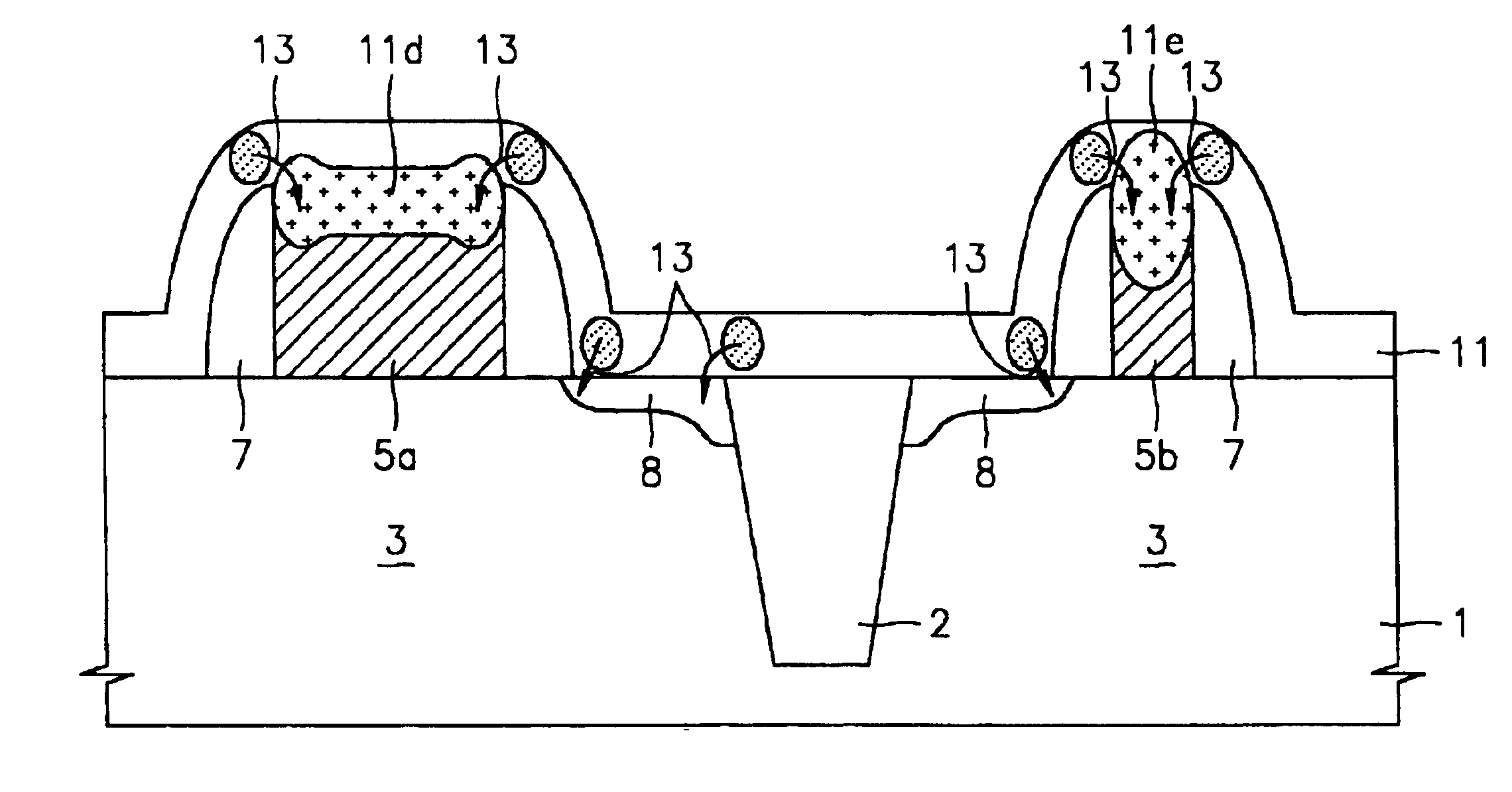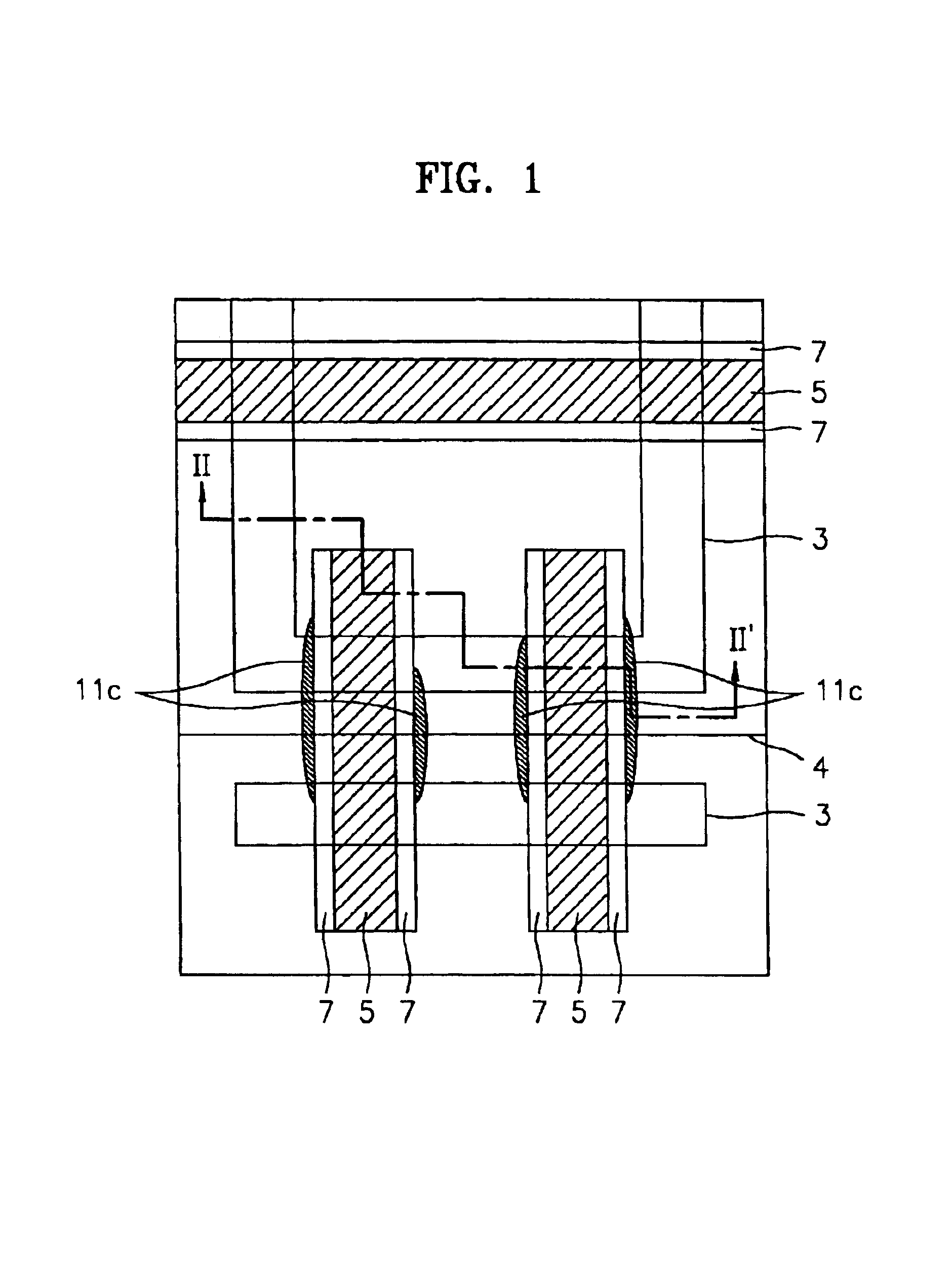Method of forming cobalt silicide film and method of manufacturing semiconductor device having cobalt silicide film
a cobalt silicide film and cobalt silicide film technology, applied in the field of semiconductor device fabrication, can solve the problems of poor characteristics of cobalt silicide film, substrate surface defects, poorly formed cobalt silicide film, etc., and achieve the effect of facilitating the adjustment of sheet resistan
- Summary
- Abstract
- Description
- Claims
- Application Information
AI Technical Summary
Benefits of technology
Problems solved by technology
Method used
Image
Examples
experimental example 1
[0066]A six-transistor (6Tr)-SRAM cell was manufactured on a semiconductor wafer substrate according to 110 nm design rules using the following method of forming a cobalt silicide film according to the present invention to prepare a test sample.
[0067]The front surface of the substrate having a poly-Si gate pattern with a sidewall spacer and a source / drain region (hereinafter, referred to as “underlying structure(s)”) was wet-cleaned using a SC1 solution and then a HF solution. The substrate was etched by RF sputtering using an argon (Ar) gas to remove an oxide film to a thickness of 50 Å, a Co film was formed to a thickness of 100 Å by sputtering, and a Ti-rich, titanium nitride capping film was formed to a thickness of 100 Å at a flow rate of an N2 gas. The RF sputter etching, the formation of the Co film, and the formation of the titanium nitride capping film were carried out in situ. According to a rutherfold backscattering spectroscopy (RBS) analysis, a Ti / N atomic % ratio in th...
experimental example 2
[0073]The sheet resistances (Rs) of NMOS gates and PMOS gates in the test sample and the control sample prepared in Experimental Example 1 was measured and the results are shown in FIGS. 10A and 10B. FIG. 10A shows the Rs of NMOS gates and FIG. 10B shows the Rs of PMOS gates. In FIGS. 10A and 10B, —∘— represents the test sample and —□— represents the control sample.
[0074]As shown in FIGS. 10A and 10B, while the test sample exhibited a very low, uniform Rs distribution, the control sample exhibited a very high, nonuniform Rs distribution. This result demonstrates that the Ti-rich capping film efficiently removes impurities such as oxide and nitrogen present in an interface between the Co film and a source / drain region or a gate.
experimental example 3
[0075]A test sample and a control sample were prepared in the same manner as Experimental Example 1. Secondary ion-mass spectrometric (SIMS) results after primary RTA and after a selective wet etching are respectively shown in FIGS. 11A and 11B.
[0076]In FIGS. 11A and 11B, —♦— and —▾— represent the test sample and —∘— and —□— represent the control sample. As shown in FIG. 11B, the surface of the test sample (using Ti-rich capping film) had a higher Ti content than that of the control sample (using N-rich capping film), by as much as 102. In FIG. 11B, a region having the depth of 0 μm corresponds to the surface of a Si region before a primary RTA and, at the same time, to an interface of a Co film and a cobalt silicide film before a selective wet etching. Judging from the fact that a Si region is transformed into a cobalt silicide film while Co diffuses toward the Si region and the result of FIG. 11B, it can be seen that a large amount of Ti diffuses toward an interface between a Co f...
PUM
| Property | Measurement | Unit |
|---|---|---|
| temperature | aaaaa | aaaaa |
| temperature | aaaaa | aaaaa |
| temperature | aaaaa | aaaaa |
Abstract
Description
Claims
Application Information
 Login to View More
Login to View More - R&D
- Intellectual Property
- Life Sciences
- Materials
- Tech Scout
- Unparalleled Data Quality
- Higher Quality Content
- 60% Fewer Hallucinations
Browse by: Latest US Patents, China's latest patents, Technical Efficacy Thesaurus, Application Domain, Technology Topic, Popular Technical Reports.
© 2025 PatSnap. All rights reserved.Legal|Privacy policy|Modern Slavery Act Transparency Statement|Sitemap|About US| Contact US: help@patsnap.com



